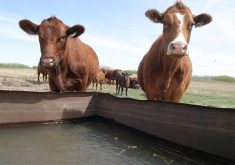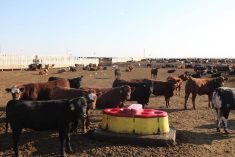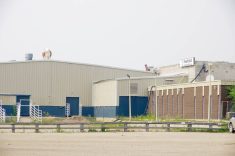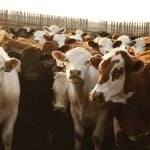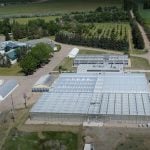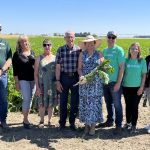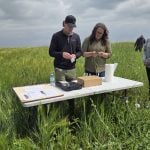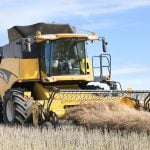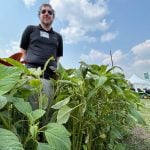Pig producers need to understand that they must continually improve pig welfare, no matter how many improvements they make, a Western College of Veterinary Medicine expert says about pig welfare.
That includes getting prepared to move into crate-free farrowing one day.
“Once you have gotten out of gestation stalls, the farrowing crate will be next,” Yolande Seddon told the recent Manitoba Swine Seminar.
“You’re going to be under pressure to reduce confinement whilst also trying to increase your litter size.”
However, that doesn’t have to come at a cost to productivity if the industry also achieves continual advances in animal management.
Read Also
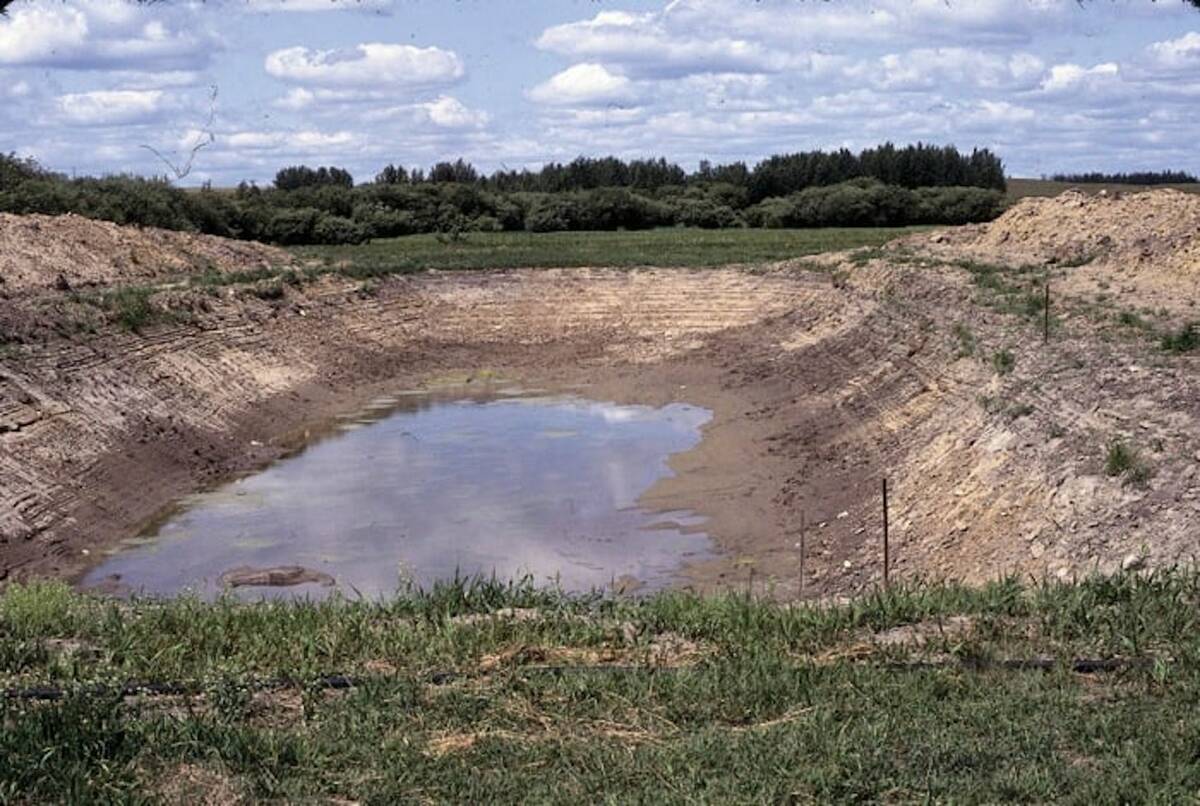
Dry summer conditions can lead to poor water quality for livestock
Drought conditions in the Prairies has led to an decrease in water quality, and producers are being advised to closely monitor water quality for their animals.
“We can have success to have a humane, high-welfare indoor system, but we have to get the ingredients right,” said Seddon.
“Potentially this is the area of the greatest productivity gains because we will bring with it huge innovation.”
Some farmers in Britain and Denmark, as well as a few in Canada, have experimented with unconfined farrowing, in which a sow has her own pen but is not prevented from moving around. Successful pens contain areas for nesting, farrowing and dunging, which allows for more natural pig behaviours.
Research has shown that productivity does not need to be hurt by unconfined farrowing, but management needs to be different and the sow needs to learn how to act within the system.
“Once she is loose, you really need to work with the sow a lot more,” said Seddon.
The farrowing pens that have been developed tend to be about six square metres compared to the usual 4.24 metre farrowing crates.
Many farmers are worried about piglets being crushed, but Seddon said a high proportion of sows appear to crush no piglets at all in open systems. Breeding sows like that is important.
“That is a maternal trait that we need to select for,” said Seddon.
Unconfined farrowing might not be economically viable now, but with properly designed pens, in which piglets can avoid being crushed and sows can learn how to move and lie, it might be possible to reduce confinement to only four days.
“Temporary confinement may be the way forward for now,” said Seddon.
The pressure for more improvements in pig welfare will not abate, she believes. Farmers will need to prove that their animals are not merely physically healthy but also able to follow “natural” behaviours and have “emotional well-being.”
Those will need to be demonstrated to address the public’s big concerns: “What is the quality of life in an intensive barn?”
“By and large, our current system of operating is seen as wholly inadequate for the pig,” Seddon said.
“You can’t ever really see this going away.”
However, with more research, careful implementation and good management, there’s no reason the future’s hog barns won’t continue to operate in an environmentally controlled way and be profitable.








